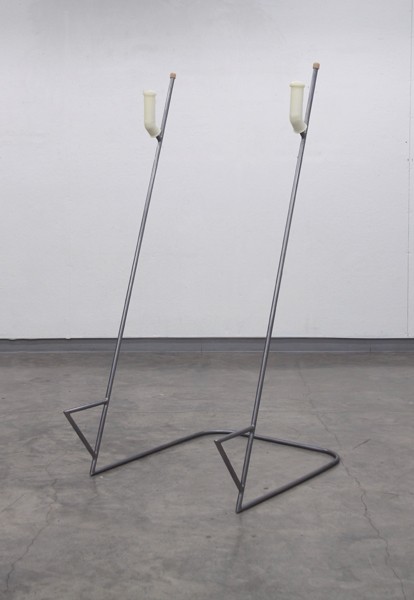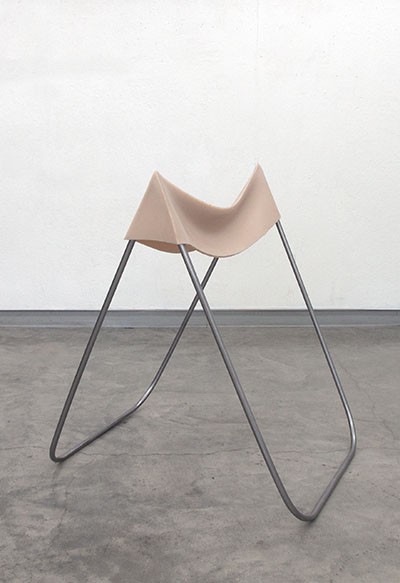Hannah Levy
Monday, 11 November 2013



Hannah Levy
Work from her oeuvre.
“Artist Hannah Levy uses the term “design purgatory” to describe these overlooked objects, cursed to live below the radar and gaze of their human creators. Levy finds herself attracted to forms that, once removed from their intended environs and functions, begin to lose the human conditioning that initially defines them. Medical equipment, safety bars, gymnastic devices and pool handrails can all be freed of the bondage of their human servitude. Once free, these objects immediately seem to lose their obvious semantic connections. They become epistemologically disconnected from the human mind. What was once the metal structure of a shopping cart starts to seem increasingly alien and non-human.
In Levy’s Untitled stainless steel and vinyl piece (2013) there are two figure-four handrails that no longer are tied to the edge of a pool. Instead they rise up from a concrete floor. Their ergonomically designed use is thwarted, and they turn inward becoming more of a blockage then a helping hand. The vinyl that covers them gives them a prosthetic new skin that further complicates definition. One of Levy’s classmates called them “dog heads,” seeing them first as an outline of a cartoon dog. Undoubtedly that same classmate has used this poolside object countless times. In this context, however, the human to object connection has become oblique.
What is key in Levy’s work is how she provides these objects with the potential to take on new meaning, giving them license to express unknown aspects of their virtual selves. Something like a grab-bar is inherently tied to the binary of human/object. The object is formed and exists only in regards to its ergonomic relationship with the human body. Levy removes the human body from her work and provides new synthetic bodies, usually cast polyurethane foam or rubber that interacts with these forms to create new differential assemblages. This move displaces the object from direct human knowledge, yet the essence of the object still remains. Somewhere in the stillness of viewing, a strange familiarity with the object exists. It is more felt then understood, an unspoken and purely intuited connection that reveals a different side to what is already known. It is here that the human viewer begins to peek into the virtual potentials of these objects.” – Ryan Lauderdale, Wow Huh